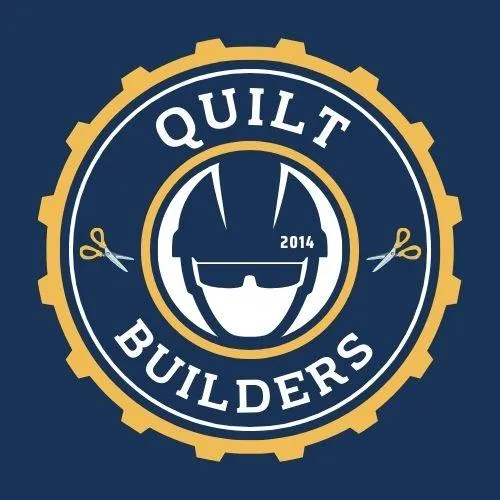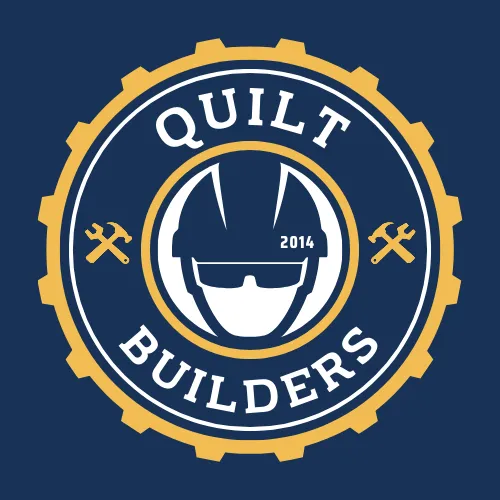
Basic Quilting Techniques: A Step-by-Step Guide
Welcome to the next step in your quilting journey! In this post, we'll cover essential quilting techniques that every beginner should master. From sewing the perfect seam to executing basic stitches and cutting quilt pieces accurately, these foundational skills will set you on the path to creating beautiful quilts. Remember, quilting is a step-by-step process, and with practice, you'll gain confidence and precision.
Mastering the Basics: How to Sew a Perfect Seam
Why Precise Seams Are Crucial Precise seams are the backbone of a well-made quilt. They ensure that your quilt pieces fit together perfectly, giving your finished quilt a professional look, as well as adding to the strength and durability of your finished quilt.
Step-by-Step Instructions for Sewing a Straight Seam
Prepare Your Fabric: Press your fabric pieces to remove any wrinkles.
Align the Edges: Place two fabric pieces right sides together (RST), aligning the edges.
Set Up Your Sewing Machine: Use a straight stitch setting and adjust the stitch length to medium.
Sew the Seam: Start sewing from the edge of the fabric, keeping a consistent seam allowance (usually 1/4 inch). Use a seam guide to help maintain accuracy.
Press the Seam: After sewing, press the seam open or to one side, as required by your pattern.
Tips for Maintaining a Consistent Seam Allowance
Use a Seam Guide: Attach a seam guide to your sewing machine to help keep a consistent seam allowance. Another option is to measure 1/4" from out to the right from where your needle comes down, and place a 2' - 4" piece of painters' tape to use as an edge guide for your fabric. The painters tape is moveable & has the added benefit of not "gumming up" everything.
Mark the Seam Allowance: Use a fabric marker or pencil to draw a line on the back of your fabric where you need to sew.
Practice on Scrap Fabric: Before working on your quilt pieces, practice sewing straight seams on scrap fabric or lined notebook paper. When you can sew 1/4" seams consistently, this practice also teaches your eye what a 1/4" seam should look like--you begin to recognize when your seam is off, whether it's a bit too much or a bit too little...or just crooked. I've learned from personal experience that it's easier to fix these kinds of problems the sooner recognize them.
Common Mistakes to Avoid
Uneven Seams: Ensure your fabric pieces are cut accurately and aligned correctly. I cannot tell you how many seams I have had to rip out & re-sew because I inadvertantly let my alignment slip and ended up with a 1/4" seam on one side, but not so much on the other side. And don't get me started about what happens when you don't cut your fabric accurately! It might not seem like much when you're just looking at one piece, but I promise, it can really add up to some major damage. For instance, I watched a fellow quilter strip sewing a Christmas quilt, and they cut several strips 1/8" too narrow...no biggie, right? Wrong! Everytime they sewed two of those strips together, it was off by 1/4" because of that seam--by the time they sewed 4 sets together, they were off by 1 3/4" (1/4" for each of the pairs, plus another 3/4" when the pairs were sewn together). By the time they had sewn all 32 strips together...they were off by nearly 8"! Those tiny inaccuracies are additive; when they're too big, you can sometimes trim them to correct the situation. When they are too small, you have to resort to other ways to try & deal with the problem. Best solution: make sure your fabric pieces are cut accurate & aligned correctly right from the beginning.
Skipping Backstitching: Always backstitch at the beginning and end of a seam to secure the stitches. My mom taught me early on to always backstitch a stitch or two at both the beginning and the end of every seam, and I have to tell you, this practice has saved me no end of grief. It prevents seams from pulling open before I have gotten my subunits &/or blocks installed into their place in the quilt.
Quilting for Beginners: Simple Stitch Techniques to Get You Started
Introduction to Basic Stitches Used in Quilting Learning a few basic stitches will help you in both hand quilting and sewing projects. Here are three essential stitches to get you started.
Running Stitch
Purpose: Used for hand quilting and basting.
How to Do It: Insert the needle through the fabric, make a small stitch, and continue in a straight line.
Visual Assist:
Backstitch
Purpose: Provides a strong seam, often used for repairing or where extra strength is needed.
How to Do It: Insert the needle, pull through, go back a stitch length, and bring the needle out a stitch length ahead.
Visual Assist:
Whipstitch &/or Invisible Binding Stitch
Purpose: Used for sewing edges together, like binding.
How to Do It: For the whipstitch, insert the needle from the back, pull through, and wrap around the edge, inserting again from the back. For the invisible binding stitch, insert the needle through the binding edge from the back to the front of the binding; take a tiny stitch of the backing & batting directly behind the binding stitch, re-entering the binding edge approximately 1/4" down from the first stitch. Bring your needle out of the binding edge & take another tiny stitch of the backing & batting directly behind where the needle has exited the binding, re-entering the binding edge at nearly the same point as it exited, running another 1/4" before exiting the edge of the binding again, taking another tiny stitch of backing & batting behind where the needle exited the binding edge & continue repeating around the entire quilt.
Visual Assist:
Tips for Practicing Stitches on Scrap Fabric
Start Small: Practice each stitch on a small piece of scrap fabric.
Consistency is Key: Focus on making your stitches even and consistent.
Relax: Keep your hands relaxed to avoid tension in your stitches.
Easy and Accurate Cutting: Tips for Perfect Quilt Pieces
Importance of Accurate Cutting in Quilting Accurate cutting ensures your quilt pieces fit together correctly, which is crucial for the overall appearance and construction of your quilt.
Tools Needed for Cutting
Rotary Cutter: For precise and clean cuts.
Cutting Mat: Protects your work surface and helps with accurate measurements.
Rulers: Use quilting rulers for straight and accurate lines.
Techniques for Precise Cutting
Align Fabric with Grid Lines on the Mat: Place your fabric on the cutting mat, aligning it with the grid lines for accurate cuts.
Use the Rotary Cutter and Ruler: Hold the ruler firmly in place and cut along the edge with the rotary cutter.
Cut Multiple Layers: If you're confident, cut multiple layers of fabric at once to save time.
Common Pitfalls and How to Avoid Them
Dull Rotary Cutter Blade: Change the blade regularly to ensure clean cuts.
Slipping Ruler: Use non-slip grips on your ruler to prevent it from moving during cutting.
Misaligned Fabric: Always double-check that your fabric is aligned properly before cutting.
Conclusion
Mastering these basic quilting techniques will give you a solid foundation as you continue on your quilting journey. Remember to practice regularly and take your time to get each step right. Share your progress, ask questions, and join our community for additional support and inspiration.
Call to Action For more information on Understanding Quilting Basics, check out:
How to Choose the Right Fabric for Your Quilt
The Importance of Color and Pattern in Quilting
Happy Quilting!

